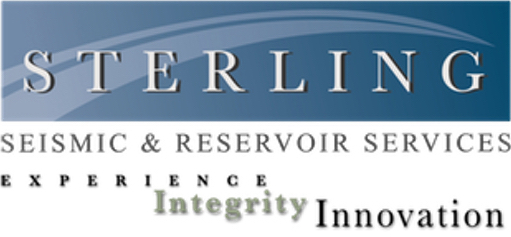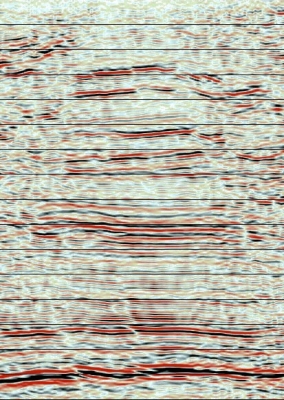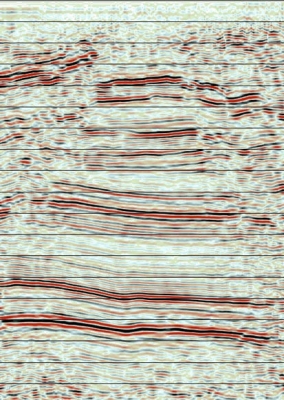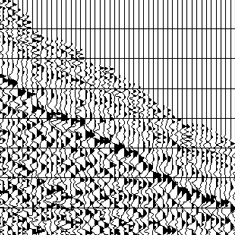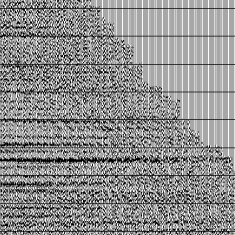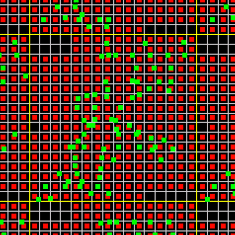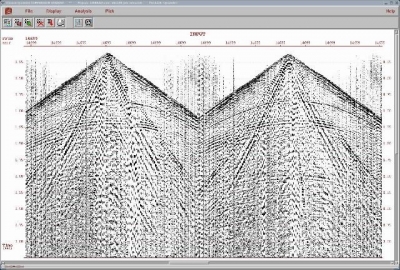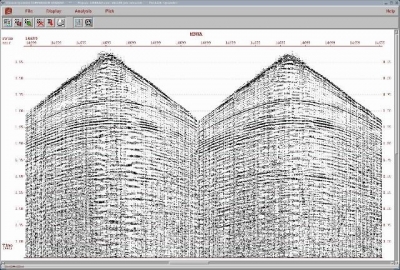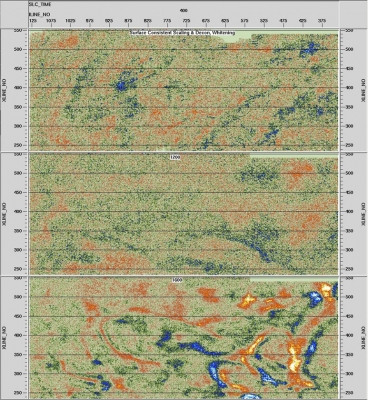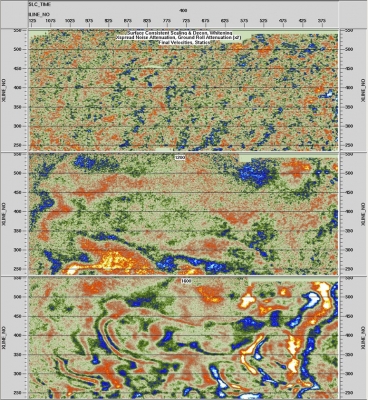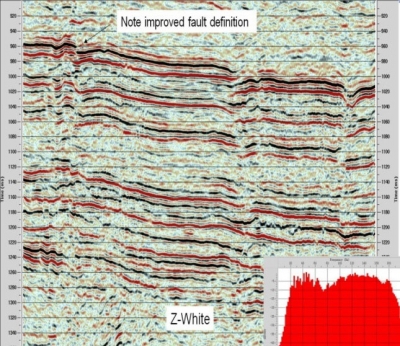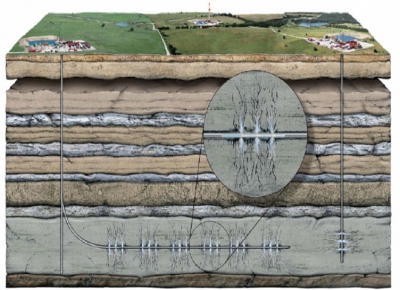Sterling’s Depth Imaging approach provides a timely, cost-effective method for enhancing precision drilling and geo-steering of long lateral wells.
Depth (PSDM)
Optimizing drilling in unconventional reservoirs requires both an accurate and high resolution image in depth. Our robust Pre-stack Depth Imaging Services, utilizing proprietary reflection tomography coupled with state-of-the-art Tsunami™ Kirchhoff based depth imaging tools will maximize your investment and enhance drilling performance.
5D Regularization and Interpolation
Wide azimuth 3D seismic data is inherently 5 dimensional with the terms being; offset, azimuth, x, y and time. This makes OVT (offset vector tiles) or COV (common offset vectors) domain a logical choice for performing 5D regularization and/or interpolation. The OVT approach is ideal for improving sampling, or decreasing spacing, as input (pre-conditioning) to a common vector pre-stack time migration (OVT / COV PSTM). Thus improving S/N and sampling for a preserved offset and azimuth migration. This approach then allows azimuthal velocity analysis (HTI) to be performed post-migration or to include HTI in the OVT-PSTM for full anisotropic time imaging. The 5D solution can also be leveraged as input to depth imaging.
Advanced Noise Toolkit
Sterling has the ability to examine the characteristics of noise in a number of domains including: 3D Shot, 3D Receiver, Shot/Receiver Lines, CDP, Common Offset, 3D Cross Spread, Common Offset/Vector (OVT), and random.
Sterling Noise Philosophy
Depending on the noise characteristics and/or source of the noise; one domain may be more effective for suppressing the noise and preserving signal. Our preference is to utilize a cascaded approach (multi-domain) to surgically suppress noise without altering signal, including anisotropy (preserved for fracture detection).
Frequency Dependent Noise Suppression (FDNS)
Adaptive-subtracted technique – Click here for FDNS data examples
FDNS identifies anomalous amplitudes in narrow and/or specific (low – high) frequency bands. It is a data adaptive tool that can be performed in specific window lengths and therefore has no adverse effect on the data. Many noise techniques (multi-channel) can have an adverse effect on HTI anisotropy. Due to the adaptive nature of FDNS the approach is “anisotropy friendly”. This noise tool is very effective in removing swell noise, seismic interference, noise bursts, spikes, ground roll and other types of random or coherent noise. Optionally, it can also be used to restore weak amplitudes that occur across certain channels.
Cross Spread Noise Suppression (CSNS)
Sorting receiver-line traces from a line of shots into 3D x-spread creates hybrid gathers. Sparse sampling in 3D shot coverage becomes dense & regular in hybrid gathers. Aliased noise in standard x-line gather or shot record becomes un-aliased in hybrid gather. Noise can be removed more effectively by 3D filtering techniques leading to improved velocities, statics and final imaging.
Permian Basin 3D – Time-slice
Bandwidth Preservation and Extension – for thin-bed reservoir development
Many of our E&P customers are looking for a competitive edge or technology advantage in the vastly evolving unconventional plays. In many of these rapidly developing resource plays the optimal reservoir interval(s) are relatively thin (20-50 ft.). Drilling long laterals in these thin-bed reservoirs requires accurate imaging and improved data bandwidth.
We offer two innovative solutions for improving resolution of your recorded seismic data:
Bandwidth Preservation
This ground-breaking development is based on prior work by Norman Neidell and Daniel Wisecup. This technique recovers the full signal/bandwidth permissible by the geologic environment in which it is recorded. We utilize a proprietary summation and subsequent migration approach to directly preserve the usable seismic frequencies recorded. In many cases we are able to observe a significant increase in the usable bandwidth allowed by conventional stack utilizing this new and innovative approach.
Bandwidth Extension
This process enhances seismic data by extending the usable bandwidth of the seismic spectrum into higher frequencies. The enhanced reflection series can be analyzed, interpreted and used for subsequent processing and/or attribute analysis.
Complex Near-surface
For many projects in onshore basins throughout the world, a solid near-surface/refraction analysis is the difference between getting data and getting ‘snow’. Customers bring their most challenging projects to Sterling for consultation and resolution of difficult near-surface problems.

